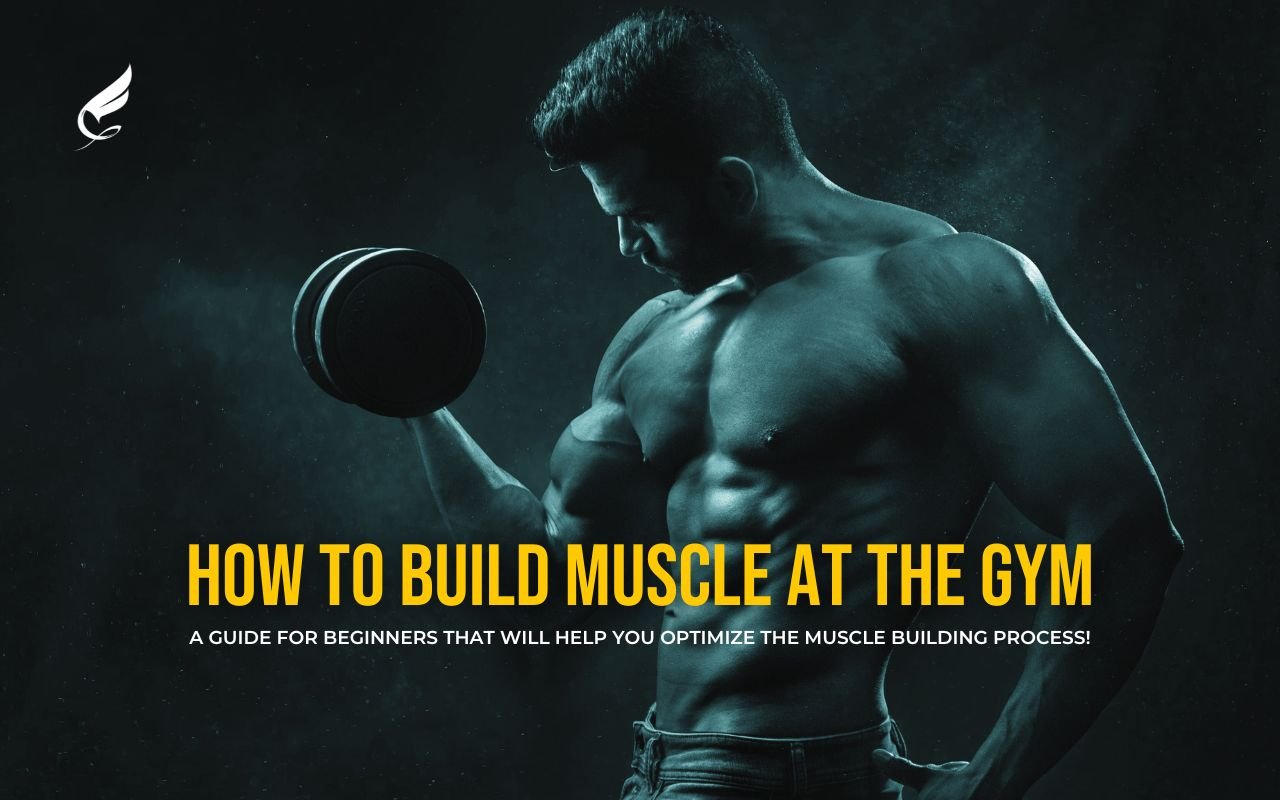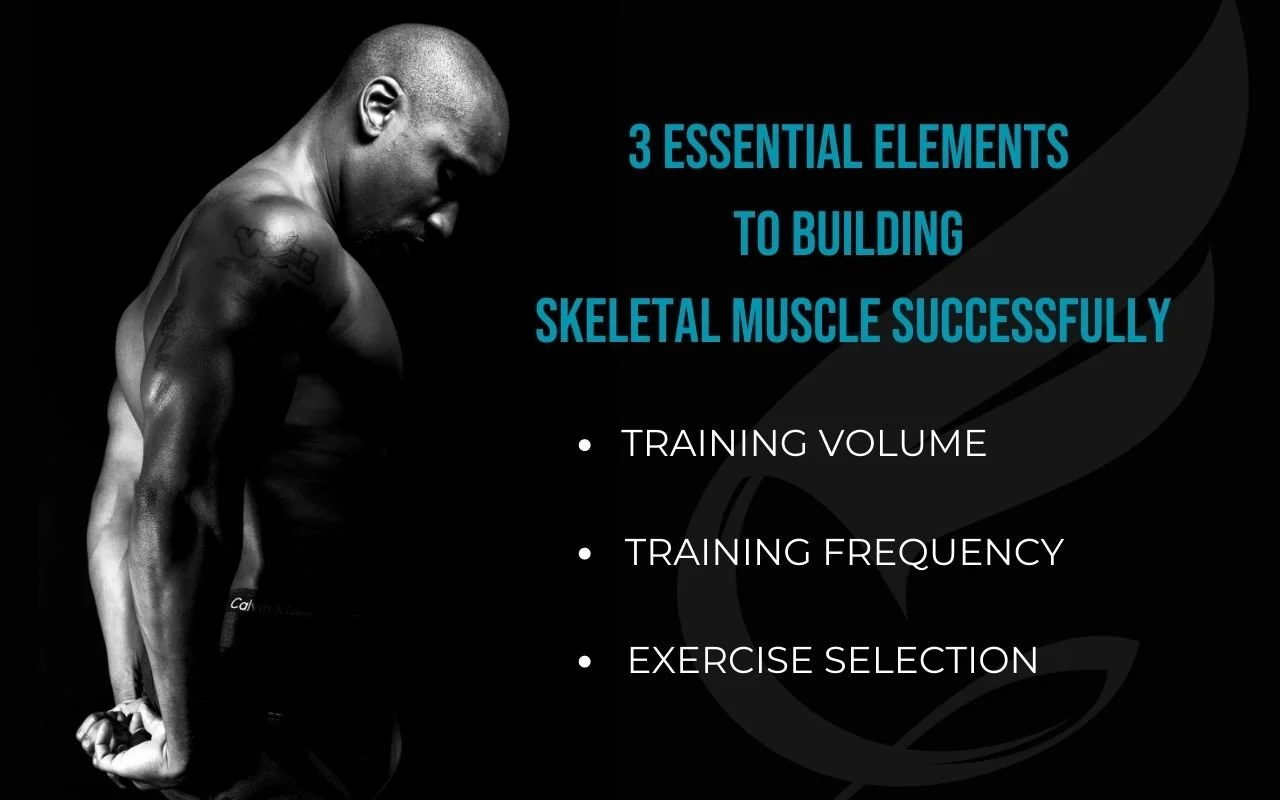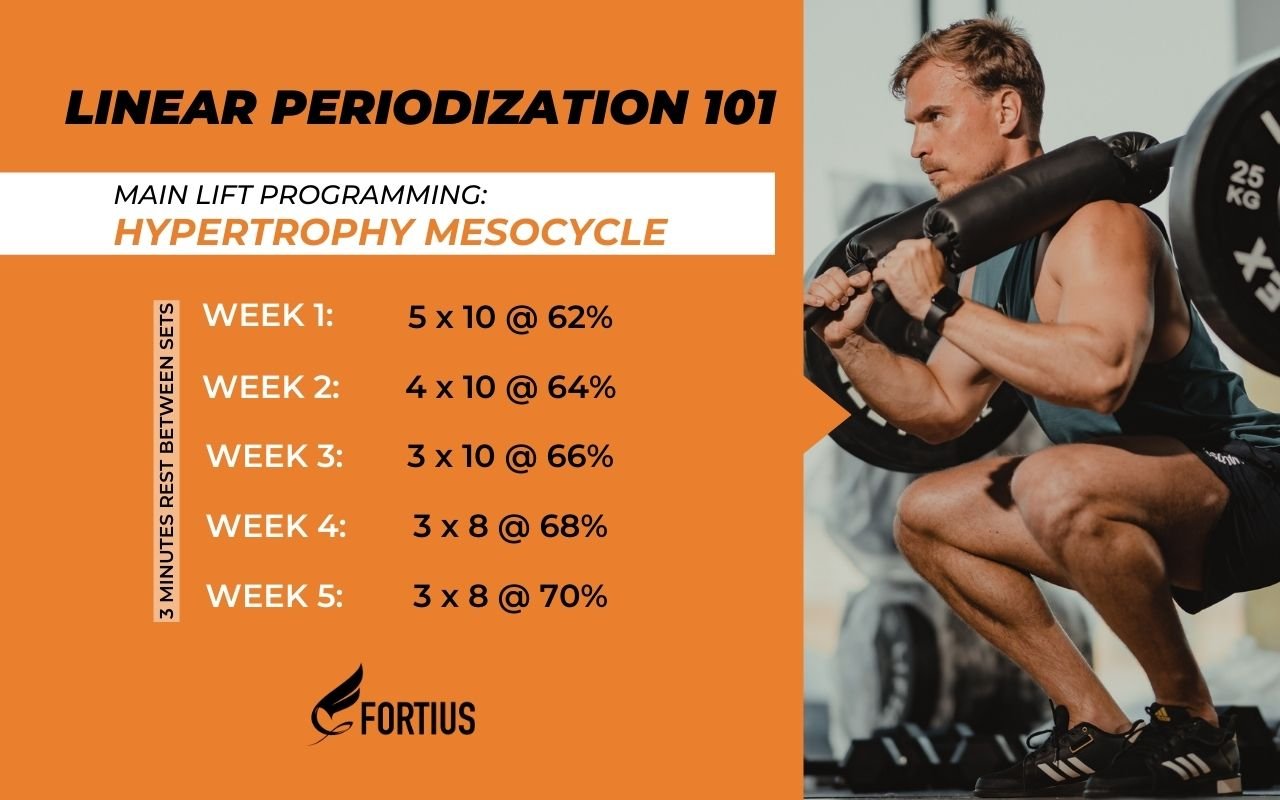How To Build Muscle at The Gym: A Guide For Beginners That Will Help You Optimize The Muscle Building Process!
It is essential to understand that when building muscle, one needs to force adaptation through progressive overload. This means gradually increasing the resistance placed on the body over time to allow for continued growth and development. To do this effectively in the gym, exercises must be done with good form, correct loading, and intensity.
Understanding Progressive Overload and its Role in Muscle Growth
Progressive overload is a fundamental principle in strength training that involves continually increasing the demands on the musculoskeletal system to stimulate muscle hypertrophy or growth. It can be achieved through various methods: increasing the weight lifted, modifying the number of sets or repetitions completed, enhancing the exercise's complexity, or reducing rest time between sets. This doesn't mean you need to increase the weight every single workout, but rather, you should strive for an overarching upward trend over time. It's crucial, however, to manage this progression carefully. Increased too rapidly may lead to injury or overtraining, hindering long-term progress. Conversely, progress might stagnate if the load isn't challenging enough as muscles adapt to withstand the stresses. Therefore, striking a balance in applying progressive overload is critical to effective muscle-building in the gym.
The Ideal Repetition Range for Hypertrophy and the Risks of Training to Failure
Regarding muscle growth, there is no ideal rep range for stimulating hypertrophy, and muscle growth can be achieved anywhere in the 1-30 reps range! One could argue that the ideal ranges for hypertrophy, aka muscle growth, could be somewhere in the 6-12 rep range simply as it allows for the highest quality of output while reducing the risk of injury, which comes with lower rep ranges and heavier weights and reducing the risk of wear and tear which comes with higher rep ranges.
No matter what rep range you use in your training to build muscle, you need adequate intensity! Only intense resistance training will promote muscle growth, pushing yourself in your sets close to 0-3 reps short of failure!
As I mentioned earlier, taking sets close to failure can become detrimental to long-term progress and should be avoided simply due to its adverse effects on recovery and increased injury risk! Instead, tools like RPE (Rate of Perceived Exertion) and RIR (Reps in Reserve) can be used to determine more accurately how close to failure one is.
Explaining RPE and RIR: Key Tools for Estimating Proximity to Failure
RPE (Rate of Perceived Exertion) and RIR (Reps in Reserve) are crucial tools to gauge an individual's proximity to muscular failure during resistance training. RPE is a subjective measure of intensity based on perceived difficulty on a scale of 1 to 10, where 1 is no effort, and 10 is maximal effort or failure. Conversely, RIR is a more objective measure, which refers to the number of reps left 'in the tank' before reaching failure. For instance, an RIR of 1 means you believe you can only do one more rep before you can't complete another one with good form. These tools help maintain a balance between pushing towards progress and preventing overtraining or injury, making them a vital component of effective and safe muscle-building workouts.
Most beginners must improve their RIR estimates, which will improve with time and training experience!
Optimizing Training Volume, Frequency, and Exercise Selection for Efficient Muscle Growth
In addition to correct loading and intensity, optimal training volumes, frequency, and exercise selection must be considered when building muscle in the gym. Any program should include exercises that target all major muscle groups with adequate volume spread over several days throughout the week. Compound exercises such as squats, deadlifts, presses, and rows should be the cornerstone of any program.
Optimal training volume for muscle gain
There is an anabolic cap of 6 to 10 sets for a body part before no further growth is achieved. The ideal training volume will vary from individual to individual based on their training experience and their ability to recover from their workouts which will be influenced by several factors like sleep, stress management, nutrition, etc.
Important Note:
The ideal volume will also vary with how close to failure you bring your working sets. If you train closer to failure, the number of sets you do per muscle group will be lower than for someone who trains with 3-4 reps short of failure.
Ideal training frequency for optimizing muscle mass!
Training each body part twice per week is probably better than one time per week! The way I would look at this is that if you target a big muscle group with 2 weekly workouts of 6-8 sets, you will be able to do those 6-8 sets with full intention and high intensity, and every week you will do a total of 12-16 sets. If you attempt to do that volume in a single session after a few quality sets (6-8,10 at best), you will likely start slacking and accumulating junk volume! This example will help you understand how higher frequency can support muscle growth!
Exercise selection for optimizing muscle hypertrophy!
There are absolutely no must-do exercises! Your muscle responds to tension & stretch, and it is crucial to find exercises to load your muscle efficiently!
Muscle growth = Maximum Muscle Tension Over Variable Time
Let me explain the above in simple terms! More tension does not necessarily mean more weight. Tension is represented as Force x Distance X Angle of applied force and depends on the lever arm length, which varies with the angle. Individual biomechanics significantly influence this factor. Therefore, the best exercise for muscle growth allows you to generate maximum tension across the entire Range of Motion (ROM), which may differ for everyone due to individual differences in biomechanics. Consequently, to optimize hypertrophy, it is crucial to select exercises that suit your body structure and that you can perform with the full range of motion and control.
Remember, building muscle is not a one-size-fits-all approach. It's a journey that requires consistent effort, individualized techniques, and a deep understanding of one's body. Progress may seem slow, but perseverance and innovative training will produce impressive muscle gains.
Role of Periodization for Long-Term Muscle Gain
Periodization in training is simply the intentional manipulation of volume and intensity to optimize progress over time. There are several periodization models available, each with its advantages and disadvantages. For instance, linear periodization is an effective way to gradually increase training stress in a structured manner. However, this approach requires patience and perseverance as gains accumulate slowly due to the gradual increases in volume and intensity.
On the other hand, non-linear periodization models such as undulating periodization or block periodization offer more flexibility and allow for faster progress. However, these approaches can be challenging to execute correctly due to their complexity and require significant planning.
The most important thing to remember when utilizing any periodization model is that progress must accelerate over time. This is achieved by manipulating both volume and intensity, allowing for periods of higher and lower stress while pushing toward progressive overload. A practical periodization approach should also be tailored to an individual's needs, abilities, goals, and training phase!
Understanding Training Periodization with Simple Examples
Linear Periodization
Linear periodization is like climbing a staircase, where each step represents an increase in intensity and a decrease in volume. For example, let's consider a 12-week program.
Weeks 1-3: You're performing 15 reps per set with lighter weights.
Weeks 4-6: The weight increases, and your reps decrease to 10 per set.
Weeks 7-9: The weight is increased again, but now you're performing only 5 reps per set.
Weeks 10-12: You're at your heaviest weights, and you're doing 1-3 reps per set.
Each week you're progressing in intensity (weight) and decreasing in volume (reps).
Non-Linear/Undulating Periodization
Non-linear or undulating periodization is more like a roller coaster, as intensity and volume change within the week. Let's consider a sample 1-week program.
Monday: High volume, low intensity day. You might do 4 sets of 15 reps with lighter weights.
Wednesday: Medium volume, medium intensity day. This could look like 4 sets of 10 reps with moderately heavy weights.
Friday: Low volume, high intensity day. Here, you might do 4 sets of 5 reps with heavy weights.
Each workout within the week has a different focus, providing a balanced approach to strength and endurance.
Block Periodization
Block periodization is like building a wall, with each block focusing on a specific goal. Let's consider a 12-week block periodization program.
Weeks 1-4 (Accumulation Phase): High volume and low intensity. You might be doing 15 reps per set with lighter weights.
Weeks 5-8 (Transmutation Phase): Gradual decrease in volume and increase in intensity. You might do 8 reps per set with heavier weights.
Weeks 9-12 (Realization Phase): Low volume and high intensity. This block would have you doing 3 reps per set with your heaviest weights.
Each block, you're focusing on a specific attribute - muscular endurance, strength, and finally power. Remember, these are simplified examples. Your training objectives, experience level, and personal circumstances should dictate your ideal periodization scheme.
At the end of the day, there’s no one-size-fits-all periodization approach. Everyone's individual needs, abilities, and goals should dictate the best model. A practical periodization approach should be tailored to an individual’s needs while still pushing toward progressive overload as the primary goal of any program!
Conclusion
All in all, building muscle at the gym requires consistent effort, gradual progress over time, and an understanding of progressive overload and proper loading. By following these steps, anyone can make gains over time with patience and dedication!
If you are ready to transform your body and reach your fitness goals? It's time to take the next step with our online body transformation program! You've learned the science, now put it into practice. Our program is designed to ensure a logical and effective approach to muscle building. Don't wait! Ignite your fitness journey today and witness the transformation you've always wanted.
If you are not convinced yet, please do read more about our clients success stories:
Common Questions and Answers
How fast do muscle grow?
Physiologically the human body has a limit on how much muscle it can put on in a short period of time. Generally, for those starting off in the gym, it is expected that around 500-1000grams of muscle can be gained per month. This may vary depending on genetics, diet, training experience and other factors.
Does weight training increase my bone density?
Any type of resistance based activity will have a positive impact on bone health and increase bone density. Weight training provides increased resistance to bones which can lead to stronger bones with improved resilience against injury or conditions like osteoporosis.
Are there any risks associated with weight training?
Weight training does carry some risk of injury, especially if proper technique is not followed and exercises are performed incorrectly. It is important that you attend a class or have proper instruction in learning the technique first. Additionally, it is important to ensure that your body is warmed up so as to avoid any potential muscle injury. As always, if you are feeling unwell at any point during a training session, stop and seek advice from your doctor or medical professional before continuing.
I am unable to build muscle despite following all the guidelines from your blog?
Training represents only one part of the equation when it comes to muscle building. It is important to remember that diet, sleep and lifestyle factors can all have an impact on the rate at which you build muscle. If you are not able to make progress despite following the guidelines outlined in our blog, it may be worth considering if there are any other areas of your lifestyle or diet that could be improved. Additionally, seeking professional advice from a qualified nutritionist or personal trainer may help to shed light on any potential issues and provide more tailored advice for your specific needs.
To find out more about our other services, check out:
To learn more about all things training and nutrition, check out some of our science-based blogs
Top 5 benefits of online fitness training - link
Wholesome Arabic meal plan with measurements & shopping list! - link
Understanding menopause and exploring hormone replacement therapy! - link
How to increase testosterone levels & side effects of testosterone deficiency? - link
Menopause in women: signs, symptoms and course of action to alleviate those symptoms! - link
Ten natural alternatives to pre workouts! - link
What is deload in lifting? - link
Shoulder workout routine! - linkThe power of transformation lies within you! - link
Achieving Sustainable Weight Loss - link
Are liver supplements safe and effective or do they cause more harm? - link
Are carbs bad for you? - link
Legs workout for massive gains, exercise videos and instructions! - link
Creatine for women, do you need it? - link
All you need to know about protein - link
All you need to know about Celiac disease - link
Gluten free meal plan for 1500 and 200 calories - link
How to lose fat the right way - link
Guide to finding the right coach for you - link
Top 10 gyms in Dubai - link
Guide for men on how to build muscle - link
How to achieve a body transformation - link
I don't eat anything; why am I not losing weight - link
Guide for mean on how to build muscle - link
What is a bespoke online program? - link
Tips for parents to encourage physical activity with kids - link
Find out more about online personal training benefits - link
Women's workout guide with fitness tips - link
Best fitness facility in Dubai - link
Back and hamstring workout - link
Push-pull workout - link
Push day workout with Fortius - link
How much muscle can you put on in a month - link
New breakthrough weight loss medication - link
How to lose belly fat: a science-based approach to weight loss - link
Dad bod, do you have it, and does it have to be the reality for the modern man? - link
Other blogs - link
#StayStrong
#BeFortius







